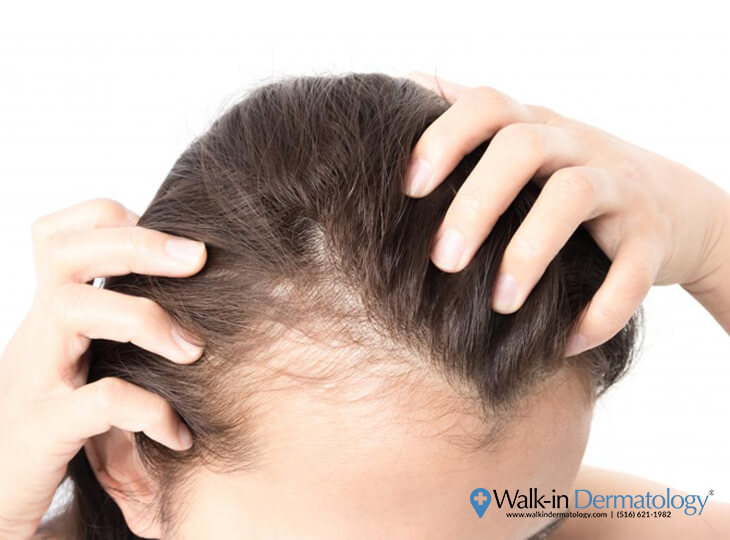Table Of Content

“Though losing hair can be scary, I always reassure patients that they won’t go bald from COVID-related shedding,” Dr. Kuhn says. “Typically, the best thing to do is simply wait it out.” In the meantime, practicing healthy hair habits is paramount. Here, dermatologists explain the connection between COVID-19 and hair loss—and what you can do if you’re experiencing this unique type of shedding. The list of possible COVID-19 side effects is as lengthy and diverse as the list of potential symptoms. Among those possible lingering issues is hair loss after COVID-19, a troubling side effect that emerged early on in the pandemic, leaving many people confused and concerned. Her academic background is in evolutionary biology and genetics, and she has extensive experience in scientific research, teaching, science writing, and herpetology.
COVID-19 Infection: Impact on Hair
Acute TE is a self-limiting disorder that usually lasts for about six months, after which it usually goes into remission [6]. In the telogen phase, hairs rest for 2 to 3 months before being shed from your scalp to allow for new hair growth. This is why hair loss due to TE happens so long after a triggering event, such as an illness or highly stressful period. The cytokines had higher levels in severe COVID-19, according to previous studies. The higher levels of cytokines may have a relationship with a higher risk of TE.

rs.type = 'text/javascript';

Avoid vigorous towel drying and harsh brushing or combing, especially when the hair is wet and more prone to breakage.” If you do want to continue using some heat, a heat protectact and something like a leave-in treatment are both recommended. Alopecia areata is an autoimmune condition that is characterized by “round patches of hair loss on the scalp,” although it can occur elsewhere on the body, Agbai says. While the exact reason for this type of hair loss is unknown, it is generally understood that “the immune system mistakenly attacks hair follicles, leading to hair loss,” she adds.
Alternative treatments
Telogen effluvium is one of the consequences of the COVID-19 pandemic. To the best of our knowledge, this is the first cross-sectional study with 48 positive cases. Further studies for investigating and clarifying the pathogenesis are required.
Of these patients, 79 were male (39.9%), and 119 were female (60.1%). Telogen effluvium (TE) is one of the consequences of the COVID-19 pandemic. COVID-19 leads to more medications and stress situations, which trigger TE. Although our patient received medication for alopecia areata on his request, TE is reversible and expected to improve without any treatment after the psychophysical damage disappears [6].
10 habits for good health
A total of 26 articles with nine observational studies and 17 case reports or series were included in the review. Confounding symptoms have been a component of Covid since the start of the pandemic — the loss of taste and smell has become a disturbing sign of the disease. Covid also has the potential to disrupt menstrual cycles, a side effect some women also reported after vaccination. Most people who develop TE have noticeable hair loss 2 to 3 months after a triggering event.
However, most patients with hair loss seem to have had only mild disease. The search brought up 26 articles, 17 of which were case reports and the rest observational studies. Five of six observational studies looked at TE, when large numbers of hair follicles enter the resting phase in response to stress or other disorders. If the rapid hair loss continues, a dermatologist may change the diagnosis to alopecia areata, which consists of round patches of hair loss on the scalp. The most common form of hair loss in men and women, however, is androgenetic alopecia but it occurs at a much slower pace. Traction alopecia can occur if the hair is pulled back from the hair follicle too tightly, according to the American Academic of Dermatology Association.
Authorship
These options should be explored with the support of a healthcare provider. The stress of living in the COVID-19 pandemic can be enough to cause hair shedding for a lot of people. Hair loss and hair shedding can be the result of a number of conditions, including a recent COVID-19 infection. Even after the shedding has stopped, patients may notice their hair is not as thick as it once was. Perng says that's because of how slowly the hair grows on average, which is about a centimeter a month. "If someone has shoulder length hair, it can take over two years for the new hairs to reach that length again and for a ponytail to feel full again," he says.
Do not sell my personal information Privacy Policy and Terms of Use
Doctors aren’t sure why only some people develop these unusual symptoms. Genetics might play a role, Dr. Mulligan said; vaccination status could also have something to do with it, as an unvaccinated person might have a more severe infection, which could generate a different course of symptoms. Scientists have also found that the coronavirus can enter the bloodstream in a minority of people, he said, which means that it’s possible that the virus could enter various organs across the body and cause symptoms beyond the respiratory system. Hair loss due to COVID-19 is likely due to a condition called telogen effluvium. This type of hair loss is hereditary, meaning that you can inherit it from your parents.
Some symptoms remain and persist throughout the acute and chronic stages, whereas other symptoms newly appear after the acute phase [3-4]. Hair loss is not common in the acute phase of COVID-19 but is a well-known sequela of COVID-19 observed in approximately 20% of these patients [2]. However, only a few case reports have described its clinical course. Herein, we report the case of a patient with post-COVID-19 alopecia that improved and recovered almost to the pre-infection level. This first scoping review shows that hair loss does occur in a proportion of COVID-19 cases, and is mostly reversible. No clear associations were made with COVID-19 severity, but female patients seemed more at risk for alopecia with this condition.
Why Am I Losing So Much Hair? - InStyle
Why Am I Losing So Much Hair?.
Posted: Fri, 26 Jan 2024 08:00:00 GMT [source]
Our study also revealed that hair shedding was more common in women than men (75.5% vs. 54.6%). Moreno-Arrones et al. investigated 191 patients with TE who had been infected with COVID-19, 78.5% of whom were females [10]. TE is thought to be more common in females because they can undergo extreme stress, such as giving birth. Iron deficiency anemia is another trigger of this condition, which is more likely to occur in women due to menstruation. In addition, women take hair loss more seriously than men and therefore are more likely to consult a physician with this complaint [7]. Telogen effluvium causes noticeable hair shedding, but that’s all you should experience.
The initial search of MEDLINE and EMBASE databases yielded 150 and 129 articles, respectively. 232 articles were screened based on their relevance and type of article. 143 articles that were either review articles, editorials, or conference abstracts were excluded from the study. Eighty‐nine articles were then evaluated for full‐text review for study inclusion per our eligibility criteria. Seventy‐six reviews, opinion articles, articles with irrelevant topics were excluded.
Telogen effluvium usually doesn’t occur at the same time as the triggering event, though—it starts approximately three months after, Dr. Ziering says. A common symptom of severe acute respiratory syndrome coronavirus 2 (SARS-CoV-2) infections was the loss of taste and smell. First of all, the sample size was limited and the study is only retrospective. Based on our knowledge, this is the first cross-sectional study investigating TE triggered by COVID-19 in Iran. TE can occur as a result of hydroxychloroquine, azithromycin, or other drugs used in COVID-19 treatment. The mental and psychological effects of the pandemic are another critical source of stress; therefore, TE may be increased overall [17].
Based on our knowledge, previous studies were case reports or case series [10, 11]. CCCA and LPP fall under the umbrella of lymphocytic scarring alopecia. The telltale signs of these conditions are chronic inflammation of the scalp and the scarring of hair follicles, which can result in irreversible hair loss, Agbai notes. The virus is thought to reach the skin through blood vessels facilitated by the presence of ACE2 receptors in the endothelium. This could be another way the SARS-COV2 could impact the hair follicles.
The inflammatory cytokines, including IL-6, TNFα, IL-1β, and IFNg, develop the catagen cycle in experimental studies [14]. Furthermore, anticoagulant proteins are decreased due to the anticoagulation cascade in response to COVID-19. It may cause microthrombi formation and obstruct hair follicle blood supply.

No comments:
Post a Comment